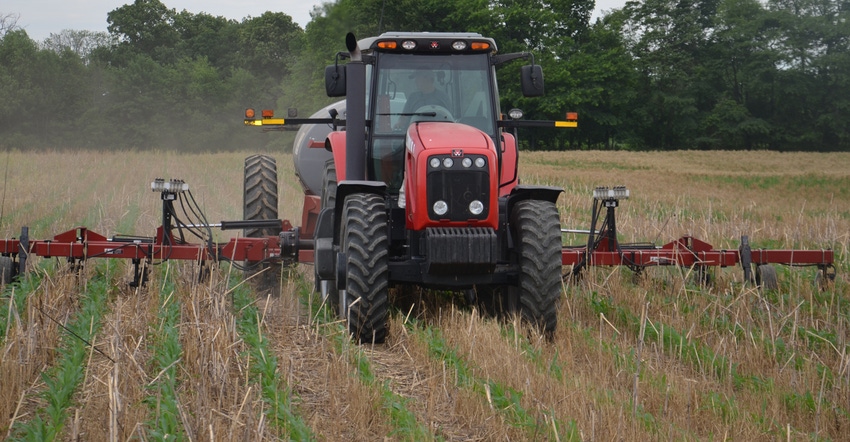
Whether you’re considering no-tilling or using cover crops for the first time or the 20th season, there’s always something to learn. Working with farmers on behalf of the Vermillion County (Ind.) Soil and Water Conservation District, Carter Morgan shares what he’s learned with others.
Morgan farms with his brother Brent, dad Brian, and uncle Darrell near Cayuga. They no-till most of their acres and seed about 2,000 acres of cover crops annually.
10 key lessons
1. It all starts at planting. “It’s important to get a good start,” Morgan says. “If you’ve got good soil health with cover crops, you can plant into good conditions and get the crop rolling. Later in the year when it gets dry, residue helps hold moisture.”
2. Always have a plan. Go into the season with a plan for managing each field, Morgan says. This includes which herbicides you will apply.
3. Always have plan b, c, d… This may be as important as having an original plan, Morgan insists. Maybe it rains and you can’t make a planned herbicide application. “You need to be flexible, and you need these alternate plans firmed up in advance,” he says. “Know what changes you can make if certain things happen.”
4. Keep seeding even if it’s dry. Some hesitated planting cover crops last fall because it was so dry. The Morgans continued seeding. When it rained, cover crops came up and they saw decent growth due to mild temperatures. Seeding cover crops can be a gamble, but they need to be out there to grow when conditions become favorable, he says.
5. Split seeding methods. Perhaps you think drilling cover crops provides better stands than aerial seeding. But there are physical limits to how many acres you can drill. Last fall, the Morgans hired about a third of their cover crop acres aerially spread and drilled the rest.
6. Know when to stop crimping. In 2020, a few no-tillers who planted into mature rye and waited until soybeans reached the V2 stage to crimp found that they killed some beans and reduced stands. “Soybeans grew up looking for light and were 12 inches tall at V2,” Morgan says. “If that happens again, they will need to crimp when beans are shorter, or terminate with herbicides.”
7. Crimping leads to easier combining. When you can terminate mature rye by crimping, it lays down a mat, and the combine head glides over it at harvest, Morgan says. “We can run 4.5 miles per hour vs. 2 to 3 miles per hour where residue was terminated with herbicides,” he observes.
8. Keep an air source handy if planting into mature rye. If rye is pollinating and pollen dust is flying, have an air source off a service truck available to blow off and suck out dust on the tractor and planter at each fill-up, he suggests. That keeps equipment from running hot.
9. Split apply nitrogen and sulfur. The Morgans typically apply 28% N, 10-34-0 and ATS at planting, and follow by injecting 32% N and ATS for sulfur at sidedress for corn. Having nitrogen and sulfur available at key times is crucial, Morgan believes.
10. Choose residue wheels that work for you. The Morgans found that a shark-tooth or razor-tooth design helps move residue out of the way best on their corn planter.
About the Author(s)
You May Also Like




